Orthodontic Hygiene

Now that you have your braces in place, it's even more important to maintain good hygiene during your treatment. Braces, wires, bands and retainers can trap food particles and make it difficult to brush or floss away plaque. Careful brushing and flossing, preferably after every meal and snack, is the best way to prevent plaque build-up, tooth decay and gum disease.
You can learn more about proper orthodontic hygiene by clicking on the buttons for each particular topic.
- Step 1
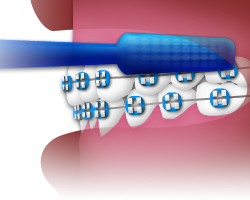
Start with the outside of the teeth, with the brush flat against the surface of teeth. Use circular, vibrating motions.
- Step 2
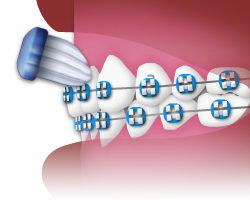
When brushing your top teeth, clean the area between the gums and braces by angling the brush downward. Keep moving in small, circular motions.
- Step 3
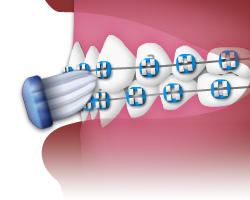
When brushing the lower teeth, angle the brush upward.
- Step 4
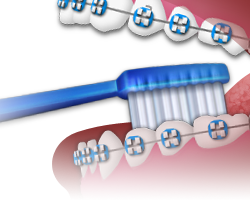
Carefully brush the chewing surfaces of both the upper and lower jaw.
- Step 5
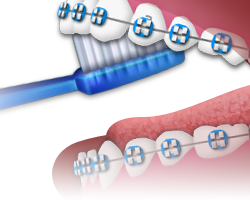
Finish by brushing the inside of the teeth.
- Step 1

Floss at least once a day. You need to pull the floss under the archwire with a floss threader. Start by pulling floss through the threader.
- Step 2
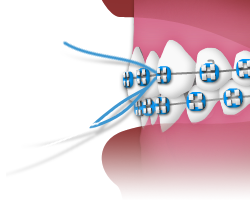
Push the end of the floss threader under the archwire and pull the floss through.
- Step 3
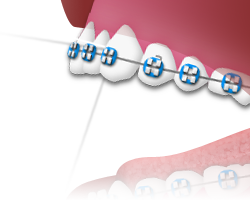
Pull the floss up between the teeth and gently move it up and down the side of both teeth. Remember to move it up all the way under the gums.
- Step 4
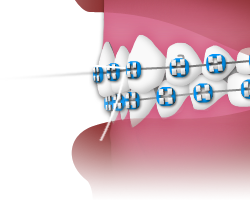
Pull the floss out and use a different section of it for the next tooth.
- Step 1
- Step 2
- Step 3
- Step 4

When you're finished brushing and flossing, rinse your mouth thoroughly with water or an antiseptic dental rinse. An antiseptic rinse can help minor gum inflammations and irritations from orthodontic appliances, as well as cleanse canker sores and other minor wounds. It can also remove debris or irritants from the mouth, speeding up your body's natural healing process.

Using an interdental toothbrush (proxabrush) can help keep your teeth, braces and gums clean and healthy. Use this device slowly and carefully to clean under orthodontic wires and around braces, taking care not to damage your braces.
